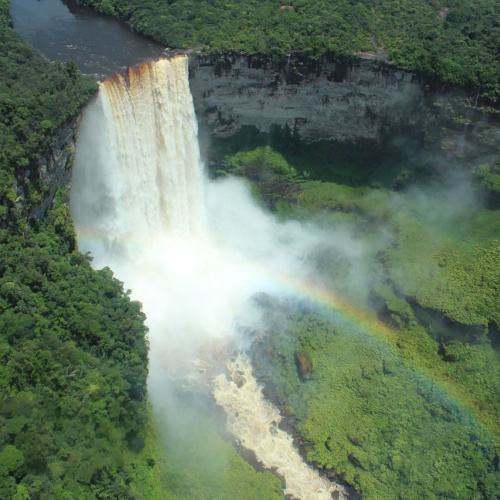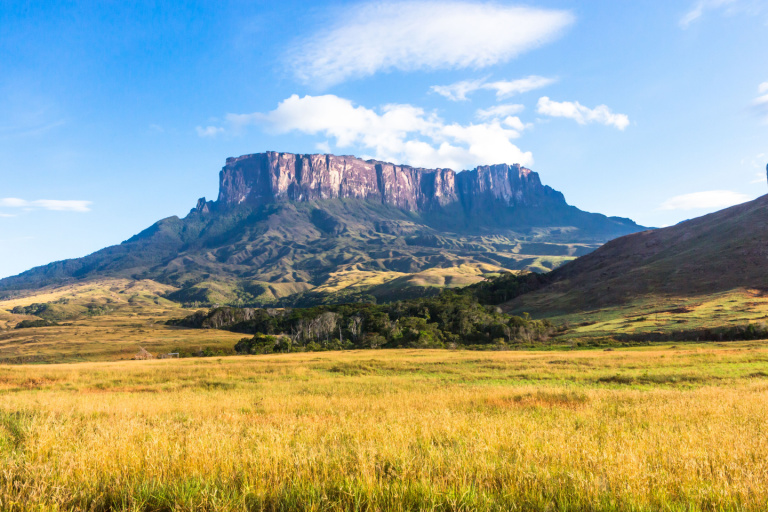
Merissa Baichulall/Shutterstock
When Is the Best Time to Visit Guyana?
The best time to visit Guyana is during the shoulder seasons of spring (April to June) and fall (September to November). During these months, the weather is mild and sunny, the crowds are smaller, and prices are lower.
Here are some of the benefits of visiting Guyana during the shoulder seasons:
- Mild weather: Guyana has a tropical climate, but the shoulder seasons offer mild and pleasant temperatures across most of the country. This makes it ideal for spending time outdoors and enjoying the country’s many natural attractions.
- Smaller crowds: The shoulder seasons are less crowded than the peak dry season (August to September and February to March), so you’ll be able to enjoy Guyana’s popular tourist attractions without having to deal with large crowds. This is especially important if you’re visiting popular destinations like Kaieteur Falls and the Rupununi savannas.
- Lower prices: Prices for flights, accommodation, and activities are generally lower during the shoulder seasons than during the peak dry season. This means you can save money on your trip without having to sacrifice quality.
Here are some specific examples of how you can enjoy the most of Guyana during the shoulder seasons:
- April to June: Visit Kaieteur Falls, hike in the Pakaraima Mountains, and explore the Iwokrama Rainforest Reserve.
- September to November: Visit the Rupununi savannas, go birdwatching in the Shell Beach Protected Area, and fish in the Essequibo River.
 Average Temperatures by Month
Average Temperatures by Month
|
Jan |
Feb |
Mar |
Apr |
May |
Jun |
Jul |
Aug |
Sep |
Oct |
Nov |
Dec |
| Fahrenheit |
86°
|
86°
|
86°
|
87°
|
87°
|
87°
|
87°
|
88°
|
88°
|
88°
|
87°
|
86°
|
| Celsius |
30°
|
30°
|
30°
|
31°
|
31°
|
31°
|
31°
|
31°
|
31°
|
31°
|
31°
|
30°
|
Climate in Guyana
Summer Season in Guyana
Guyana's climate is characterized by two main seasons - wet and dry. The wet season typically occurs from May to August and December to January. The dry season, from September to November and February to April, is considered the best time to visit. During the dry season, temperatures range from 75°F to 90°F, making it an ideal time for exploring the country's lush rainforests, wildlife, and natural wonders.
Rainy Season in Guyana
Guyana's rainy season is split into two main periods - May to August and December to January. During these times, the country experiences heavy rainfall, making travel less convenient. The rains are essential for maintaining the region's unique ecosystems.
Winter Season in Guyana
Guyana's "winter" coincides with the dry season, from September to November and February to April. While temperatures don't vary significantly, this period offers drier and more pleasant conditions for exploring the country's natural beauty, from the Kaieteur Falls to the Iwokrama Rainforest. It's also a great time for birdwatching and wildlife experiences.
Our Recommendations
| Destination |
Jan |
Feb |
Mar |
Apr |
May |
Jun |
Jul |
Aug |
Sep |
Oct |
Nov |
Dec |
| Guyana |
 |
 |
 |
 |
 |
 |
 |
 |
 |
 |
 |
 |






